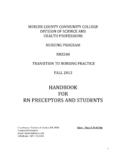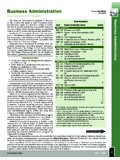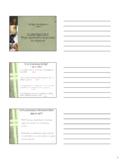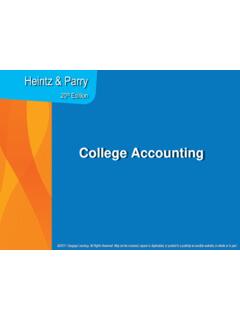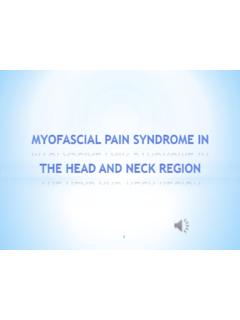Transcription of MERCER COUNTY COMMUNITY COLLEGE - mccc.edu
1 MERCER COUNTY COMMUNITY COLLEGE MATH, SCIENCE, HEALTH PROFESSIONS DIVISION COURSE OUTLINE BIO 201 General Microbiology Spring 2016 Course Coordinator: Professor Hilker 609-570-3367 Office: MS 122 Course Website: ~hilkerd _____4_____ _____3_____ _____3_____ Credit Hours lecture Hours Laboratory Hours Required Texts/Laboratory Items: 1. Microbiology, by Tortora, Benjamin Cummings Publishing Co., 12th Edition, 2016 ISBN 9780321928924 2. BIO201 General Microbiology lecture Notes, by Hilker mccc Book Store, Third Edition 3. Laboratory Experiments in General Microbiology, by Hilker Stipes Publishing Co., 5th Edition 4. Print laboratory lecture notes before each lab. Notes can be found on the course website located at ~hilkerd/ OR can be purchased under Optional Texts. 5. Disposable gloves (laboratory requirement). Closed-toed shoes in lab are highly recommended. Optional Texts: 1. BIO201 General Microbiology Laboratory: Laboratory Experiment lecture Notes, by Prof.
2 Hilker (7/2015) or they can be printed from the website (refer to #4 above) 2. Quick Study Academic Microbiology Bar Chart Catalog Description: The study of the morphology, taxonomy and metabolism of microbes with emphasis on fungi, protozoa, helminths, viruses and bacteria. Review of role of microbes in nature and their industrial application and medical importance. Laboratory exercises permit development of skill in techniques, reinforce certain lecture material and introduce concepts and material not presented in lecture . The laboratory portion of the course stands alone and is essentially a complete and separate course by itself and will include mini-lectures when necessary and appropriate. Prerequisites: Successful completion of BIO 101 or BIO 103 (grade of C or better) or consent of instructor Note: Participation in Biology laboratory courses is permitted provided the student has completed the required prerequisites, is a minimum of 16 years of age or by permission of the instructor and the Dean of the division.
3 2 Grading: lecture : 75% of total course grade 1. There will be a total of 5 exams (4 exams and a cumulative final exam) given in the course. There will be NO make up exams!!! Exams will count 70%. 2. Students will be divided into teams of three to four. Ten in-class assignments will be given throughout the semester that counts 10 points each. These assignments are timed so you and your team members must work together and be prepared. A maximum of 100 points can be obtained. There are no make-up assignments if absent. This team assignment will count 5% of your grade. Laboratory: 25% of total course grade 1. There will be a total of 12 laboratory quizzes (10 points each) given at the beginning of the class that will make up 90% of your laboratory grade. The best 10 quiz grades will be computed in determining your laboratory grade. There are no make-up quizzes if you miss a laboratory or come late to laboratory. 2.
4 Each student will be given an unknown microorganism that he/she will try to identify. Correct identification (written laboratory report required) will result in an additional 10 points and will count 10% of your laboratory grade. Failure in attempting the unknown will result in a zero for the entire laboratory portion of the course. The students performance will also be constantly evaluated by the laboratory instructor. 3. An optional EXTRA CREDIT report may be done and will be calculated into the laboratory grade as described on page 8. Absence from more than 2 lab classes will result in the instructor withdrawing a student from the course or failing the course if it occurs after the withdrawal deadline for the semester. Final Course Grade In summary, the computation of the final course grade is as follows: lecture : 1. Sum of 5 exams x 70% 5 2.
5 Sum of 10 assignments x 5% Laboratory: a) Sum of 10 best lab quizzes x 90% } x 25% b) Additional 10 pts. if unknown identified } For example: lecture : 1. Sum of 5 exams = 400 pts. 2. Sum of 10 assignments = 96 pts. (100 pts. max) 3 Laboratory: Sum of 10 best lab quizzes = 80 pts. x .90 = 72 pts. Unknown identified = 10 pts. 400 pts. x .70 = 56 pts. 5 96 pts. x = pts. (72 pts. + 10 pts.) x .25 = pts. Total = pts. = B- Course Grading: A = 93-100 A- = 90-92 B+ = 87-89 B = 83-86 B- = 80-82 C+ = 77-79 C = 70-76 D = 60-69 F = 0-59 Attendance I expect students to attend class unless you are ill or have some other important reason for not attending. If you are unable to attend please inform me of your absence. An attendance sheet will be circulated in lecture . Please print your name and only your name. MERCER s Academic Integrity Policy Any student who: a) knowingly represents work of others as his/her own; b) uses or obtains unauthorized assistance in the execution of any academic work; or c) gives fraudulent assistance to another student is guilty of cheating.
6 Violators will be penalized in accordance with established COLLEGE policies and procedures. Your examination should reflect your work and knowledge alone. You may not use any outside help, written or oral. You may not use notes of any sort; nor exchange papers, comments or gestures with classmates. Such an exchange of information constitutes cheating. You are just as guilty of cheating giving information to a person as is the person receiving it. Any observed instance of cheating is punishable by confiscation of the examination papers and being assigned a grade of zero for the examination. This applies equally to the giver and receiver of information. Cheating may result in a student being removed from the course and/or being reported to the Academic Standards Committee for possible academic probation or dismissal. Be careful not to give the appearance of cheating. Keep your eyes to yourself. Keep your papers right in front of you so they cannot be seen by the people to either side of you or the person behind you.
7 If you have a question, raise your hand and consult with a proctor. Note: I reserve the right to conduct an additional evaluation ( oral or written exam) if any particular test score is dramatically inconsistent with other exam results or classroom performance. My goal is to make an accurate and fair assessment of a student s performance in this course. 4 Course Objectives Upon satisfactory completion of this course, students should be able to: 1. Highlight the historical events in the science of microbiology. 2. Describe the molecular classification of organisms and distinguish between prokaryotic and eukaryotic cells. 3. Demonstrate an understanding of fungi, protozoa, and helminths. 4. Explain the structure and physiology of bacterial cells, describe bacterial growth requirements, and explain the various methods of genetic exchange in bacteria. 5. Describe viral multiplication in animal/bacteria hosts, distinguishing features of viruses and classification of important animal viruses.
8 6. Review the roles of microbes in nature, society, and their industrial application including genetic engineering. 7. Explain methods of transmission of infectious diseases and the microbes ability to cause disease. 8. Describe the infectious process, non-specific and specific host defense mechanisms against disease, and humoral and cellular immunological defense mechanisms. To be able to explain the role antibodies play in transplantation, hypersensitivity reactions and immunological testing. 9. Describe the physical and chemical methods available in preventing microbial growth and how to control microbes with chemotherapeutic measures. 10. To be able to describe various bacterial, viral, fungal, protozoan and helminthic infections as related to various anatomical locations. 11. Through laboratory work, students will develop various laboratory skills that include aseptic technique, dilutions, microscopy and interpretation of biochemical reactions.
9 Students will be required to identify an unknown microorganism. 5 Spring 2016 lecture Schedule BIO 201 Unit # Week of Chapter(s) Subject 1 1/19 1, 3, 10, 14 Introduction to Microbiology (DVD s) 2 1/26 12, 21, 22, 24 Mycology 25, 26 3 2/2 12, 22 through 26 Animal Parasites: (DVD s) Protozoa and Helminths 4 2/16 2, 4, 5, 6, 8 Bacterial Physiology, (DVD s) Structure & Genetics 5 2/23 13, 21 through 26 Virology (DVD s) 6 3/1 11 and 27; Bacterial Groups Appendix A (DVD s) 7 3/8 9 and 28 Applied Microbiology (DVD s) and Biotechnology 8 3/8 14, 15 Infection & Disease (DVD s) 9 *3/22 16 Resistance to Infection: Cellular Defenses (1st & 2nd Lines of Defense) 10 3/29 17, 18, 19 Immunity: Humoral Defenses (3rd Line of Defense), Hypersensitivity and Serology 11 4/5 7, 20 Control of Microbes 12 4/12 21, 24 Diseases of the Skin, Eyes, and Respiratory System 13 4/19 25 (DVD S) Diseases of the GI Tract Withdrawal Deadline: Friday April 8, 2016 Note: Schedule is subject to change at the discretion of the instructor * Spring 2016 Recess.
10 March 14-20, 2016 6 Unit # Week of Chapter(s) Subject 14 4/26 26 (DVD s) Diseases of the Urinary & Reproductive Systems 15 5/3 22, 23 Diseases of the Nervous & Cardiovascular Systems Note: Classes end: 5/9/16 In-Class Final Examination Period: 5/10-5/14/16 (TBA) Mastering Microbiology Website: Optional The textbook publisher has a comprehensive tutorial and review tool that provides students with a wide variety of activities for every chapter in the textbook. These activities are not required for the course. The access code for this site is included with the new edition of the text. If it s not included or if you have an older version of the text and would like to purchase access to the site go to Online Resources for Microbiology Education The following websites might be of interest to you: (Centers for Disease Control) (American Society of Microbiology) lecture Exam Dates lecture exams will be given in class or in the WWC Testing Center.
